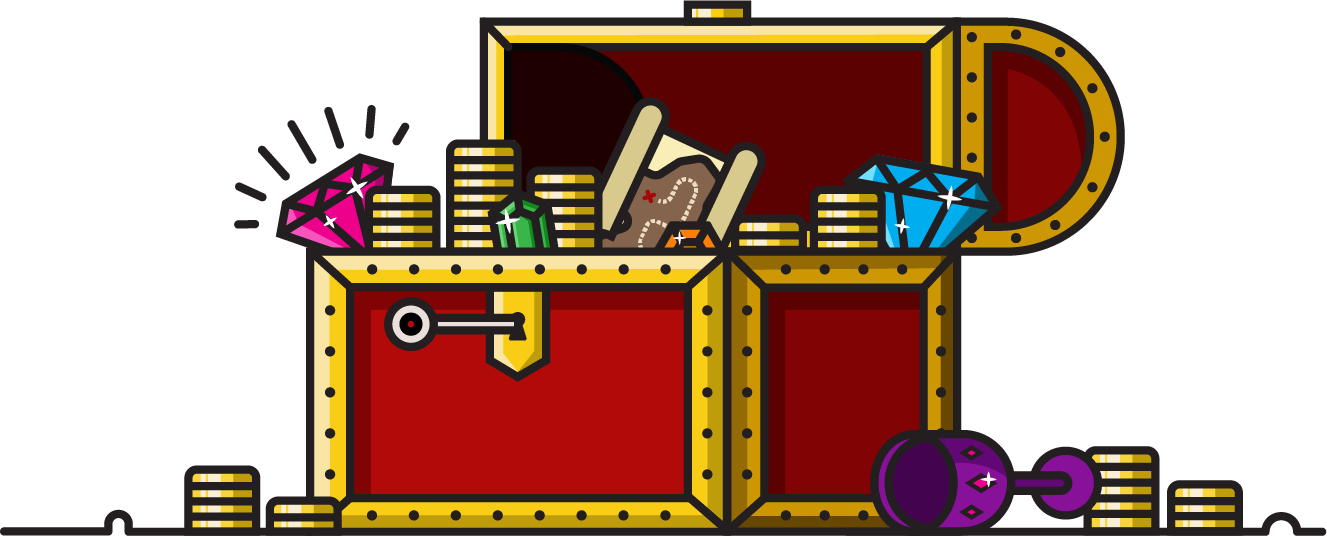This is a guest post from Lou Washington, senior marketing director and resident manufacturing expert for Cincom. Cincom is a global leader in configure-price-quote (CPQ) solutions, customer communications management, and advanced ERP.
How many times have you sat through a sales presentation and strained to follow the story line through spreadsheets, PowerPoint slides and generic customer endorsements?
As the slide deck approaches the end, the salesperson finally addresses cost and return, and your ears perk up — now they’re talking ROI.
Software ROI (return on investment) is extremely important, but almost every sales rep saves it for the end of their pitch. There is a reason for this: they want to sell you emotionally before any discussion of dollars and cents. If they succeed, ROI will be the icing on the cake.
ALSO READ: Use This Calculation to Find Your CRM ROI
This is especially true for complex business software like enterprise resource planning (ERP), customer relationship management (CRM) or configure-price-quote (CPQ). Software sales cycles are all about painting a vision and getting the customer to adopt it as their own.
Most ROI formulas are filled with familiar-sounding numbers, and the final line shows your investment recovered within a few months, give or take. If the math works in your favor, it’s on to the contract.
Twenty-four months after the signing and a year beyond the original time-to-ROI projection, you notice that the problems you were hoping to address are not fully mitigated. The new system is running into performance and user-adoption issues. People talk of unplugging the whole thing and going back to the previous system.
What went wrong?
You Are Not Alone
A 2011 study found that the annual US expenditure on “shelfware” was a bit north of $12.3 billion. On top of that number, the estimated value of unused software per computer was over $400. The net effect is that the buyer spends more and gets less. Why does this happen? Why do we let this happen?
Here are three common factors:
- The ROI case was not properly constructed.
- Implementation issues have delayed the realization of benefits.
- The product is less functional than promised.
While these factors can all contribute to a failed software project, the real reason usually has more to do with total cost of ownership, or TCO.
Software ROI vs TCO
Sales reps, sales managers, and even buyers are usually focused on front-end costs. These would include the initial amount paid to license the system or first-year subscription fees. Also, there would likely be some costs for training and implementation. Additional hardware costs and any other peripheral requirements would need to be included as well. That is the visible, identifiable cost during year one.
Then the focus moves to how much you’ll save by implementing a new system. Savings might include things like maintenance fees for your existing system (which will be discontinued shortly, right?), increased productivity through headcount reduction, and perhaps a metric related to output, depending on the volume and types of transactions you handle. Lower subscription fees would also impact this number.
These dollars all add up and, theoretically, offset all of first-year costs. Does this resemble the ROI models you’ve seen? It’s a valuable calculation and should be part of your purchase decision, but it shouldn’t be the only variable. TCO looks at comparative costs over a much longer time span. Three, four, or five-year costs and savings projections are more useful than a single-year snapshot.
Why TCO is More Comprehensive
Let’s start with those cost numbers we’ve already identified. Now, add in maintenance for ongoing years. Will you need additional hardware to go live? How about training? Software configuration costs? Some customization is almost always needed.
How about release upgrades? How often and how much do they cost? In general, you should plan on an update every 12 to 18 months. Even if these are included with maintenance, they still require installation, re-training and other associated costs.
When you collect all of these numbers and build out your five-year financial picture, you will see something that looks much different than the initial ROI projection. TCO is the long-range cost of owning the system.
Over five years, TCO provides an accurate picture of the cost of owning the product, and ROI measures whether or not you’ll recoup and offset this cost. Both numbers are useful in determining the desirability of one product over another.
Let’s Buy a Car
Let’s looks at it from the standpoint of buying a car. Let’s say you own a gas-guzzler and want to look at a hybrid. The guzzler is costing you $400 per month under a lease and the hybrid will cost you $450.
The dealer is happy to run the numbers. Low and behold, the gas efficiency is staggering. You were paying $100 a month for gas, and with the hybrid, you’ll only pay $20. Your investment of an additional 50 per month is offset by the 80 per month you are saving in gasoline. It’s instant ROI — $30 in your pocket from month one.
Everybody wants fast ROI. Some buyers even require ROI in under 12 months.
TCO, on the other hand, is an entirely different metric. It has less to do with the cost of the transaction and more to do with the ongoing cost of the product over the long term once it’s in service.
Back on our car lot, you’ll see what I mean. That $30 positive cash flow is sweet, but is it the only consideration?
First let’s figure the TCO for the old car. Lease payments of 400 bucks over 60 months is $24,000. Gas at 100 bucks per month is $6,000 over five years, and maintenance is $2,000 per year or $10,000 over the five-year life of the vehicle. Insurance is $1,000 per year. That totals out to $45,000.
Now, let’s look at the hybrid. The hybrid is going to run you an additional $200 per year in insurance. Also, if you look out to around 50,000 miles, you have to replace the rechargeable battery, which will run you a cool $5,500. This additional expense offsets the savings on normal maintenance, which is $500 less with the hybrid.
So the monthly payment for the new car is $450 a month over 60 months, which is $27,000. The gas is $20 per month or $1,200. The insurance will run an additional $200 per year, which over five years comes to a total cost of $6,000. Then there’s that battery replacement.
The TCO for the two options is close. But, the fact is, the new car will cost you an additional $2,200 over five years.
|
Guzzler Costs |
Guzzler 5 Year |
Hybrid Costs |
Hybrid 5 Year |
|
|
Monthly Payment |
$400.00 |
$24,000 |
$450.00 |
$27,000 |
|
Gas per Month |
$100.00 |
$6,000 |
$20.00 |
$1,200 |
|
Insurance per year |
$1,000.00 |
$5,000 |
$1,200.00 |
$6,000 |
|
Reg. Maintenance |
$2,000.00 |
$10,000 |
$1,500.00 |
$7,500 |
|
Replace Battery Pack |
N/A |
N/A |
$5,500.00 |
$5,500 |
|
Guzzler TCO: |
$45,000 |
Hybrid TCO: |
$47,200 |
Our model assumes a stable gas price, but the real world is not so easy. With the falling price of gas, the advantage of the hybrid is reduced even further. In later years, you may not really enjoy an $80 per month advantage because falling prices have made the guzzler even more financially appealing.
How to Measure Success (Accurately)
What should you use to measure positive return for a software product? Obviously, you want metrics that are easily quantifiable, but this will vary depending on the system you’ve purchased. Let’s look at three common examples:
ERP Software
Every ERP salesperson on the planet will mention increased inventory turns (the number of times your inventory needs to be resupplied) in the ROI calculation. There’s nothing wrong with increasing inventory turns, but this doesn’t directly save money. It frees up cash by reducing the incremental spend amounts on resupply, but from a TCO standpoint, there is no difference. If your company buys $1,200 worth of parts at the beginning of each year, they are tying up all that money in inventory. What if they only buy a monthly supply, spending 100 bucks the first month and 11 turns throughout the rest of the year?
ALSO READ: 5 Factors to Weigh During Your ERP Software Comparison
Moving from that single inventory turn to 12 inventory turns frees up $1,100 in cash, but that money is increased cash flow, not money saved. You spend the same amount of money, but you also have access to the 1,100 bucks throughout the year.
ERP is big, complex and widely variable, so look for real savings in things like production efficiency and reduction in defects. What savings can be documented in terms of increased throughput of finished goods, lower defects that translate into less waste, less rework and lower expenses?
CRM Software
The promise associated with CRM is better care for your customers and better market intelligence. Defection rates, increased sales, sales velocity, campaign response rates and reduced problem-resolution cases can all be effective measures of CRM success.
ALSO READ: 4 Indicators That You Need a CRM
CPQ Software
CPQ is all about selling products correctly the first time and not losing money on the sale. Measure the success of CPQ with reductions in inquiry-to-order time, reduced pricing errors, product returns and field maintenance calls after the sale.
Regardless of IT vertical, make sure to balance performance metrics and projected ROI with common TCO variables for business software. You’ll want to consider:
- Initial license cost
- Monthly or annual subscription
- Implementation fees
- Customization/configuration
- New hardware
- IT maintenance/upgrades
- Data migration
- User training
- Cost of additional users
* * *
On the surface, every new business system offers financial benefits. But even the simplest software can rack up considerable costs over time. Being able to project a favorable ROI is important, but don’t be fooled by a sales rep.
Before you select your vendor, look out over useful life cycle of the system and compare total cost of ownership with the cost of your existing systems and workflows. Is the new solution still advantageous?

